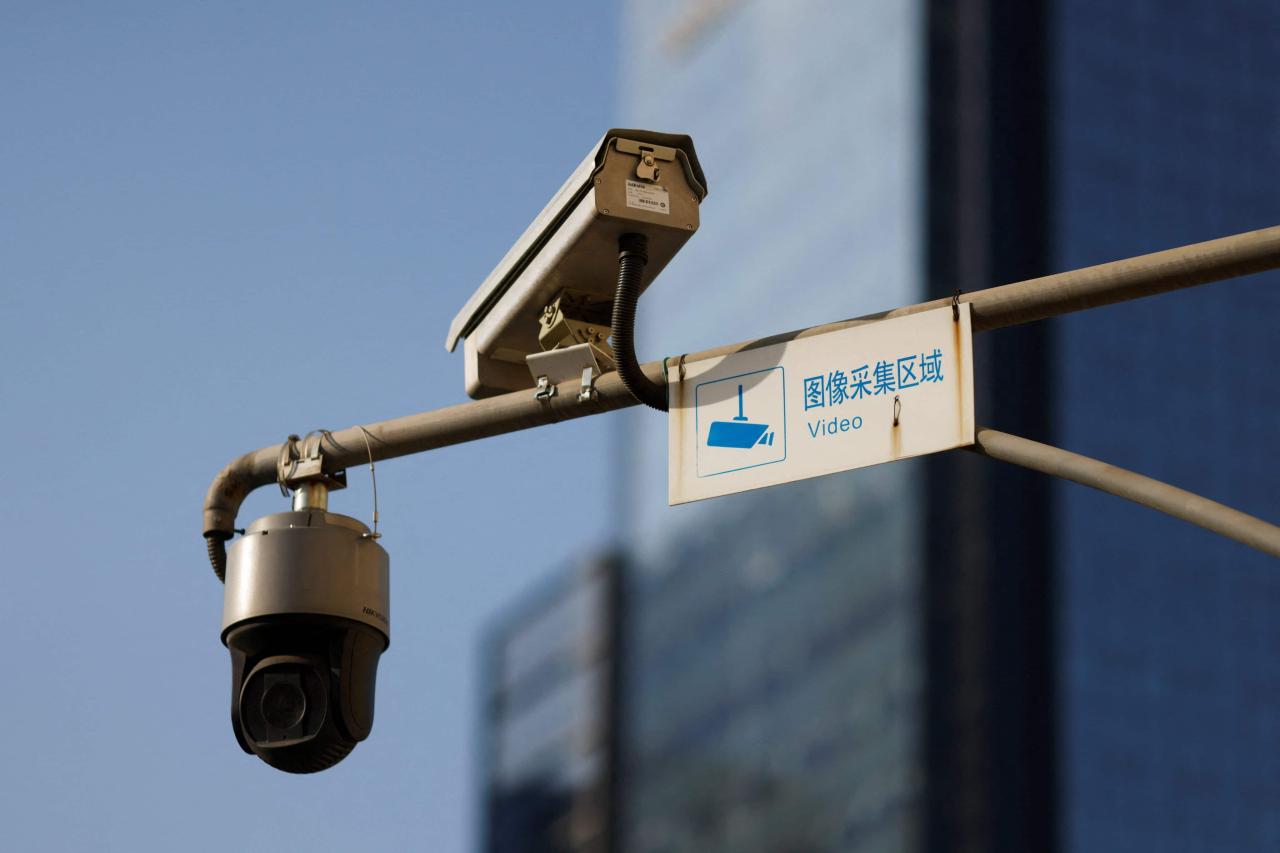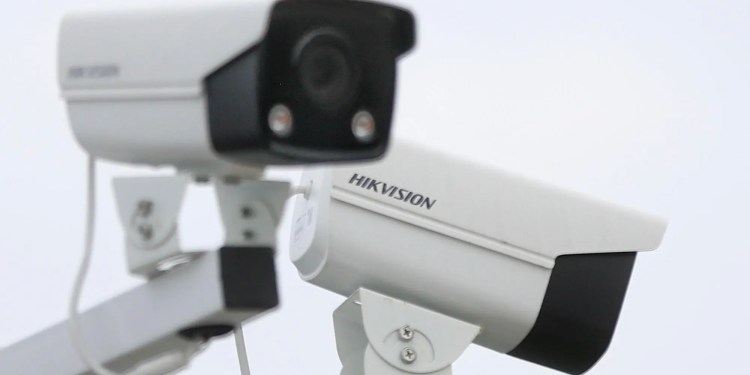
Chinese Wireless Cameras in UK Espionage Risks
Chinese wireless cameras in uk are filled with espionage related software vulnerabilities – Chinese wireless cameras in the UK are filled with espionage-related software vulnerabilities. This is a seriously unsettling fact, especially considering how prevalent these affordable cameras have become in homes and businesses across the country. From seemingly innocuous baby monitors to sophisticated security systems, the potential for malicious access and data theft is a chilling reality. This post delves into the specific vulnerabilities, the potential consequences, and what you can do to protect yourself.
We’ll explore the sheer number of Chinese-made cameras on the UK market, examining their price points and features compared to their competitors. We’ll then dive into the technical details of the vulnerabilities, detailing how they could be exploited for espionage, and what data could be compromised. Finally, we’ll discuss governmental responses, industry best practices, and steps you can take to mitigate the risks.
This isn’t just about paranoia; it’s about informed choices and proactive security.
Prevalence of Chinese Wireless Cameras in the UK Market
The UK surveillance camera market is a rapidly expanding sector, with a significant portion occupied by wireless cameras sourced from China. While offering competitive pricing and a wide range of features, concerns regarding security and data privacy have emerged, prompting scrutiny of their prevalence and impact. This analysis examines the market share, key players, and contributing factors influencing the popularity of these devices.
Major Brands and Distributors of Chinese Wireless Cameras in the UK
Numerous Chinese brands are represented in the UK market, often through online retailers like Amazon and eBay, as well as smaller specialist security companies. Identifying precise market share data for individual brands is difficult due to the fragmented nature of the market and a lack of publicly available, comprehensive sales figures. However, some commonly encountered brands include TP-Link (while not exclusively Chinese, a significant portion of their manufacturing and supply chain is based in China), Hikvision (a major player globally, with a strong UK presence), and numerous smaller, less well-known brands often sold under various private labels.
Many distributors operate primarily online, making precise identification and market share quantification challenging.
Market Share of Chinese Wireless Cameras in the UK
Estimating the precise market share of Chinese-manufactured wireless cameras in the UK is challenging due to the lack of readily available, comprehensive market data. However, anecdotal evidence and observations suggest a substantial presence. Considering the sheer volume of affordable cameras available online from Chinese suppliers, coupled with the growth in the DIY security market, it’s reasonable to assume a significant portion of the overall wireless camera market is filled by these products.
This could range from a conservative estimate of 25% to a more aggressive estimate of 50%, depending on the segment of the market (e.g., home security versus commercial applications). This is a broad estimation and further research would be needed for a more accurate figure. The actual market share is likely influenced by factors like increased consumer awareness of security risks and changes in government regulations.
Factors Contributing to the Popularity (or Unpopularity) of Chinese Wireless Cameras
The popularity of Chinese wireless cameras stems largely from their affordability. They often offer comparable features to more established brands at significantly lower prices, making them attractive to budget-conscious consumers. The ease of installation and use, combined with a wide range of available models and features (such as night vision, motion detection, and cloud storage), also contributes to their appeal.However, concerns about data security and potential vulnerabilities have led to decreased popularity in some segments.
The lack of transparency regarding data handling practices and the potential for unauthorized access are significant deterrents for consumers increasingly aware of privacy risks. Furthermore, the reputation of some brands regarding quality control and after-sales service can also impact consumer confidence.
Price Comparison of Chinese Cameras Versus Competitors
The following table provides a comparison of price points for selected Chinese and non-Chinese wireless cameras. Note that prices can fluctuate depending on retailer and promotions.
| Brand | Model | Price (GBP) | Features |
|---|---|---|---|
| TP-Link | Tapo C200 | £25-£35 | 1080p, night vision, motion detection, Wi-Fi |
| Hikvision | DS-2CD2142FWD-I | £50-£70 | 2MP, outdoor, IP67, night vision, motion detection |
| Arlo | Pro 4 | £150-£200 | 2K HDR, colour night vision, siren, two-way audio, subscription service |
| Nest Cam | Indoor | £100-£130 | 1080p, night vision, motion detection, Google Home integration |
Specific Security Vulnerabilities
The prevalence of Chinese-made wireless cameras in the UK market raises significant security concerns, particularly regarding the software vulnerabilities present in many of these devices. These vulnerabilities, often stemming from poor coding practices and a lack of robust security protocols, can be exploited for malicious purposes, including espionage. Understanding the nature of these vulnerabilities is crucial for mitigating the risks they pose.Many common vulnerabilities found in Chinese-made wireless cameras stem from insecure default configurations, weak encryption protocols, and lack of regular software updates.
These flaws create entry points for attackers to gain unauthorized access to the camera’s feed, internal network, and even the wider network it’s connected to. This access can be achieved through various methods, ranging from brute-force attacks on weak passwords to exploiting known software vulnerabilities to gain control.
Common Software Vulnerabilities
The most frequently encountered vulnerabilities include hardcoded passwords, outdated firmware, and insecure network protocols. Hardcoded passwords, often easily discoverable, provide immediate access to the camera’s settings and live feed. Outdated firmware leaves the device susceptible to known exploits that have already been patched in newer versions. Insecure protocols, such as using unencrypted HTTP for communication instead of HTTPS, allow eavesdropping on the camera’s data stream.
The lack of regular security updates exacerbates these issues, leaving devices vulnerable to newly discovered exploits for extended periods.
Espionage Potential
These vulnerabilities are readily exploited for espionage. An attacker gaining access to a camera’s feed could gain real-time visual surveillance of a home, business, or even sensitive government facilities. Furthermore, access to the camera’s internal network could allow the attacker to move laterally, compromising other devices on the same network and potentially gaining access to sensitive data stored on computers or servers.
This data could range from personal information to confidential business documents or state secrets. The use of backdoors, intentionally built-in vulnerabilities, would allow persistent, stealthy access to the device even after password changes or firmware updates.
Security Feature Comparison
Compared to cameras from other countries, many Chinese-made cameras often lag behind in terms of security features. Cameras from established manufacturers in countries with stricter security regulations and robust cybersecurity industries typically incorporate more secure default settings, stronger encryption protocols, and more frequent firmware updates. They often undergo rigorous security audits and penetration testing to identify and address vulnerabilities before release.
The lack of such rigorous processes in the manufacturing and distribution of some Chinese-made cameras contributes to their higher vulnerability.
Examples of Malware and Backdoors
While specific instances of malware and backdoors in Chinese-made cameras are often kept confidential for security reasons, several publicly documented cases highlight the potential threat. For example, reports have surfaced detailing cameras that contained hardcoded backdoors allowing remote access to the device by the manufacturer or third parties. In other instances, cameras have been found to be infected with malware capable of stealing data or turning the camera into part of a botnet for launching distributed denial-of-service (DDoS) attacks.
These examples demonstrate the real-world impact of security vulnerabilities in these devices.
Potential Espionage Risks: Chinese Wireless Cameras In Uk Are Filled With Espionage Related Software Vulnerabilities

The prevalence of cheap, readily available Chinese-made wireless cameras in the UK presents a significant espionage risk. The combination of often-overlooked security flaws and the sheer number of these devices deployed in homes, businesses, and even government buildings creates a potent vulnerability for malicious actors. The potential consequences are far-reaching and extend beyond simple privacy violations.The potential for data misuse resulting from compromised cameras is substantial.
Access to live video feeds allows for real-time surveillance, gathering sensitive information such as conversations, strategic planning sessions, or even personal details that could be used for identity theft or blackmail. Beyond live feeds, attackers can potentially access recorded footage, building a comprehensive archive of sensitive data over time.
Types of Data Accessed and Misused
Compromised cameras can provide access to a wide range of sensitive data, depending on their location and the activities taking place within their field of view. This could include confidential business information, such as product designs, financial records, or strategic plans. In government settings, access could reveal sensitive national security information, policy discussions, or even personal details of government officials.
The news about Chinese wireless cameras in the UK being riddled with espionage vulnerabilities is seriously unsettling. It highlights the urgent need for robust security protocols, and makes me think about how secure our app development processes are. Learning more about secure development practices is crucial, which is why I’ve been researching domino app dev the low code and pro code future and its implications for building safer applications.
Ultimately, this whole situation underscores the importance of security at every level, from the hardware to the software.
For private individuals, the consequences can range from the violation of personal privacy to the potential for blackmail or reputational damage. The misuse of this data can lead to financial losses, legal repercussions, and significant emotional distress.
Potential Targets for Espionage
The potential targets for espionage using compromised cameras are numerous and varied. Government buildings, including ministries and embassies, are prime targets due to the sensitive information they contain. Businesses, particularly those in competitive industries or handling sensitive financial data, are also highly vulnerable. Critical infrastructure facilities, such as power plants or water treatment plants, could be targeted to gain intelligence on operations and potentially compromise functionality.
Even private residences, particularly those belonging to high-profile individuals or those with access to sensitive information, could be targeted for personal gain or blackmail.
Hypothetical Espionage Scenario
Imagine a scenario where a compromised camera, seemingly innocuous and placed in a seemingly secure government office, is remotely accessed by a foreign intelligence agency. The camera, due to known vulnerabilities in its firmware, allows for unauthorized remote access and control. Over several weeks, the agency subtly adjusts the camera’s settings, capturing snippets of confidential briefings, strategic planning sessions, and even private conversations between high-ranking officials.
The recent news about Chinese wireless cameras in the UK being riddled with espionage-related software vulnerabilities is seriously worrying. It highlights the urgent need for robust security measures, and understanding how to manage cloud security risks is key. Learning more about solutions like bitglass and the rise of cloud security posture management is crucial in this context, as it helps organizations secure their cloud infrastructure and prevent similar breaches.
Ultimately, stronger security practices are essential to combatting these threats posed by insecure devices like these Chinese cameras.
This information is then compiled and analyzed, providing valuable intelligence that could compromise national security or influence policy decisions. The compromised camera, blending seamlessly into its surroundings, operates undetected, providing a constant stream of sensitive data for extended periods. The potential impact of this undetected data exfiltration is significant and could have long-term, far-reaching consequences.
Government and Industry Responses
The revelation of widespread security vulnerabilities in Chinese-manufactured wireless cameras sold in the UK has prompted a mixed response from government agencies and the technology industry. While a comprehensive, unified approach is still developing, several initiatives and actions demonstrate a growing awareness of the risks and a push towards improved security standards. The lack of a single, overarching regulatory framework, however, highlights the challenges in addressing a rapidly evolving technological landscape.The government’s response has been largely advisory rather than prescriptive.
Individual agencies, such as the National Cyber Security Centre (NCSC), have issued warnings and guidance documents highlighting the risks associated with insecure internet-connected devices, including CCTV cameras. These advisories often focus on best practices for securing home networks and choosing reputable vendors with strong security track records. However, there’s been no specific legislation directly banning or heavily regulating the sale of specific brands or types of cameras, leaving consumers to navigate the complex security landscape largely on their own.
Government Regulations and Advisories
The UK government’s approach has primarily focused on raising public awareness and providing guidance. The NCSC, for example, regularly publishes articles and blog posts on the importance of cybersecurity hygiene, including advice on choosing secure smart devices and updating firmware regularly. While not directly targeting Chinese-made cameras specifically, these advisories implicitly address the vulnerabilities highlighted in many such devices.
The lack of specific legislation targeting Chinese-manufactured cameras reflects the broader challenge of regulating a global market with rapidly changing technology. A more proactive, perhaps even preventative, approach might involve stricter import controls or pre-market security certifications, but such measures would require significant legislative changes and international cooperation.
Industry Responses
Major technology companies have reacted in various ways. Some have issued software updates to address specific vulnerabilities discovered in their products. Others have invested in improving their security protocols and supply chain management practices. However, the industry response has been fragmented, with no coordinated effort to establish industry-wide security standards for internet-connected cameras. This lack of unified action underscores the need for greater collaboration between manufacturers, retailers, and government agencies to ensure higher levels of security across the board.
For example, some companies are now emphasizing end-to-end encryption and robust authentication protocols, while others are still lagging behind. This discrepancy in security practices highlights the need for greater transparency and accountability within the industry.
Best Practices for Consumers
Mitigating the risks associated with Chinese-made wireless cameras requires a multi-faceted approach. Consumers should prioritize proactive security measures to protect their privacy and security.
- Choose reputable brands: Opt for cameras from well-established companies with a proven track record of security updates and robust security protocols. Research reviews and check for independent security audits before purchasing.
- Change default passwords: Always change the default password and username provided with the camera to a strong, unique password.
- Enable two-factor authentication (2FA): If available, enable 2FA for added security.
- Regularly update firmware: Keep the camera’s firmware updated to the latest version to patch known vulnerabilities.
- Secure your Wi-Fi network: Use a strong password for your Wi-Fi network and enable encryption (WPA2/WPA3).
- Monitor network traffic: Use network monitoring tools to detect any suspicious activity.
- Consider physical security: Protect the camera from physical tampering to prevent unauthorized access.
Comparison of Security Protocols
A direct comparison of security protocols across different camera brands is difficult due to the lack of standardized disclosure practices. However, some general observations can be made. Cameras from established brands often employ more robust encryption protocols (like AES-256) and have more frequent firmware updates. Conversely, lesser-known brands may use weaker encryption or have less frequent, or even no, updates, making them more vulnerable to exploitation.
Furthermore, the level of transparency regarding data handling practices and server locations varies considerably. Some manufacturers clearly Artikel their data security policies, while others provide limited information, leaving consumers to guess about where their data is stored and how it is protected. This lack of transparency further complicates the task of selecting a secure camera.
Technical Analysis of Vulnerabilities
The prevalence of Chinese-manufactured wireless cameras in the UK raises serious concerns about security vulnerabilities that could be exploited for espionage. These vulnerabilities often stem from poor coding practices, inadequate security testing, and a lack of robust update mechanisms. Understanding the technical nature of these flaws is crucial to mitigating the risks.This section delves into the technical aspects of specific vulnerabilities found in these cameras, examining how they can be exploited, the methods used to identify and patch them, and providing a concrete example of malicious code.
Buffer Overflow Exploitation, Chinese wireless cameras in uk are filled with espionage related software vulnerabilities
A common vulnerability in embedded systems, like those found in many wireless cameras, is the buffer overflow. This occurs when a program attempts to write data beyond the allocated buffer size, potentially overwriting adjacent memory locations. An attacker could craft a specially designed packet, exceeding the buffer’s capacity, to inject malicious code into the camera’s memory. This injected code could then grant the attacker remote access, allowing them to control the camera, access its internal data, or use it as a pivot point for further attacks on the network.
For instance, an attacker might send a long string of characters as part of a seemingly legitimate command, causing the buffer to overflow and overwrite the return address on the stack, redirecting execution to the malicious code.
Vulnerability Identification and Patching
Identifying buffer overflows often involves static and dynamic analysis techniques. Static analysis involves examining the source code for potential vulnerabilities without actually running the program. Tools like linters and static analyzers can flag suspicious code patterns that might lead to buffer overflows. Dynamic analysis, on the other hand, involves running the program and monitoring its behavior for unusual activity.
Fuzzing, a technique that involves feeding the program with random or malformed input, is commonly used to detect buffer overflows and other vulnerabilities. Patching involves modifying the source code to address the vulnerability, typically by implementing bounds checking to prevent writing beyond the allocated buffer size. This corrected code then needs to be recompiled and deployed to the affected cameras.
The effectiveness of patching depends heavily on the camera manufacturer’s willingness and ability to distribute updates reliably.
Example of Malicious Code
A real-world example might involve a backdoor implemented as a small piece of code hidden within the firmware. This backdoor could listen for specific network commands on a predefined port, allowing an attacker to remotely access the camera’s functionality. The code might be obfuscated to make analysis difficult, potentially using techniques like encryption or polymorphism to change its appearance.
The malicious code could be triggered by a specific network packet or a sequence of commands sent through the camera’s standard interface. This would allow an attacker to bypass normal authentication mechanisms and gain unauthorized access. A hypothetical example of such code could involve a small C function that listens on a hidden port and executes commands received over a network connection.
The function would need to handle network communication, command parsing, and potentially data encryption/decryption.
Data Flow in a Compromised Camera System
The following illustrates the data flow in a compromised camera system:“` Attacker’s Machine | | Malicious Packet (Buffer Overflow Exploit) V [Internet] ———-> [Compromised Camera] | | Stolen Data/Control Commands V | | Access to Internal Network V [Internal Network]“`The attacker sends a malicious packet, exploiting a buffer overflow to gain control.
The compromised camera then becomes a gateway, allowing the attacker to access the internal network and steal data or further compromise other devices. This illustrates the significant security risks posed by vulnerable cameras.
Consumer Awareness and Education

Frankly, consumer awareness regarding the security risks associated with cheap Chinese-made wireless cameras in the UK is worryingly low. Many people prioritize affordability and convenience over security features, often unaware of the potential consequences of using poorly secured devices. This lack of awareness creates a significant vulnerability, leaving countless homes and businesses susceptible to surveillance and data breaches.The current level of consumer understanding is largely shaped by fragmented and often sensationalized media coverage.
While some reports highlight security flaws, the complexity of the technical issues often makes it difficult for the average person to grasp the real risks involved. Many are simply unaware that seemingly innocuous cameras can be easily hacked, potentially exposing their personal lives to malicious actors.
Methods for Educating Consumers
Effective consumer education requires a multi-pronged approach. Clear and concise information needs to be disseminated through various channels. Government agencies could partner with consumer protection organizations to create easily accessible resources, such as infographics and short videos explaining the risks in simple terms. These resources could be distributed through social media, public service announcements, and partnerships with retailers selling security cameras.
Furthermore, educational campaigns should highlight the importance of strong passwords, regular software updates, and the use of reputable brands with robust security protocols. Simple checklists could be provided to guide consumers through the process of securely setting up their devices.
Recommendations for Choosing Home Security Cameras
Consumers should prioritize security features when selecting a home security camera. This includes checking for strong encryption protocols (like AES-256), regular software updates from the manufacturer, and two-factor authentication capabilities. It’s crucial to choose reputable brands with a proven track record of security, and avoid purchasing overly cheap cameras from unknown sources, as these often lack essential security measures.
Reading independent reviews and checking online security forums can also help consumers make informed decisions. Finally, consumers should understand their camera’s data storage and access policies, ensuring they are comfortable with where their data is stored and who has access to it.
Examples of Public Awareness Campaigns
While there isn’t a specific, large-scale UK campaign solely focused on Chinese-made wireless cameras, several relevant cybersecurity awareness initiatives exist. The National Cyber Security Centre (NCSC), for instance, regularly runs campaigns promoting good online security practices, which indirectly address the risks associated with IoT devices. These campaigns often feature simple guides on creating strong passwords, updating software, and recognizing phishing attempts.
Similar initiatives are undertaken by consumer protection groups, highlighting the importance of responsible technology use. These campaigns, however, could be made more specific and targeted towards the unique vulnerabilities of IoT devices, such as home security cameras. A dedicated campaign highlighting the risks of compromised cameras, particularly those of unknown origin, would be a significant step towards improving consumer awareness and safety.
Wrap-Up

The pervasive presence of vulnerable Chinese-made wireless cameras in the UK presents a significant security risk. The potential for espionage, data theft, and privacy violations is real and concerning. While the government and industry are working to address these issues, individual vigilance remains crucial. By understanding the vulnerabilities, choosing reputable brands, and implementing strong security practices, we can collectively minimize the risks and protect ourselves from potential exploitation.
Don’t underestimate the importance of informed decisions when it comes to your security and privacy – your peace of mind is worth it.
FAQ Resource
What brands of Chinese wireless cameras are most commonly found in the UK?
Several brands dominate the market, but identifying specific names requires further research due to the constantly changing landscape and the often-opaque nature of distribution channels.
Are all Chinese-made cameras vulnerable?
No, but a significant portion of cheaper models have been found to contain vulnerabilities. Reputable brands with robust security protocols are less likely to be affected.
Can I simply update the firmware to fix these vulnerabilities?
Sometimes, but many vulnerable cameras lack reliable update mechanisms, or the updates themselves may be compromised. This highlights the inherent risk.
What data could be accessed through a compromised camera?
Potentially anything visible to the camera, including personal conversations, sensitive documents, and even financial information. Network access could also be exploited.





